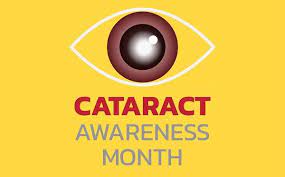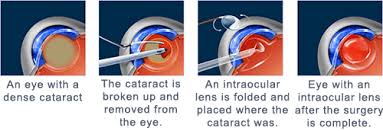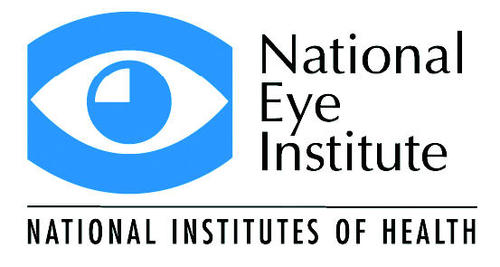June is Cataract Awareness Month
 As Cornea Associates of Texas recognize Cataract Awareness Month in June 2023, remember the importance of early detection, preventive measures, and available treatment options. By raising understanding and awareness, we can empower individuals to take charge of their eye health and maintain clear vision for years.
As Cornea Associates of Texas recognize Cataract Awareness Month in June 2023, remember the importance of early detection, preventive measures, and available treatment options. By raising understanding and awareness, we can empower individuals to take charge of their eye health and maintain clear vision for years.
What are Cataracts?![visual depiction of a normal lens compared to a cloudy lens]()
Cataracts are a clouding of the eye's natural lens. They can affect one or both eyes and cause blurred vision.
Types
Cataracts can be classified into three types: nuclear, cortical, and posterior subcapsular. Each affects a different part of the lens, but the treatment is the same.
Prevalence
Cataracts are the leading cause of blindness worldwide, affecting millions of people, especially older adults.
Causes of Cataracts![a couple embracing each other]()
Natural Aging Process
Cataracts are a natural part of the aging process, and the risk of developing them increases with age.
Genetics
Some people are born with a higher risk of developing cataracts due to their genes.
Lifestyle factors
Smoking, excessive alcohol consumption, and a poor diet can increase the risk of cataracts.
Symptoms of Cataracts
"Blurry vision, sensitivity to light, and seeing halos around lights are all symptoms of cataracts. If you experience any of these symptoms, it's important to seek medical attention."
Blurry Vision
Objects may appear blurry, hazy, or less colorful than usual.
Sensitivity to Light
People with cataracts may experience increased sensitivity to bright light or glare, making it difficult to see clearly.
Seeing Halos or Glare
This can be particularly noticeable when driving at night and can be very dangerous.
Treatment Options for Cataracts
Prescription Glasses
Prescription glasses can help correct vision problems caused by cataracts, but at some point the progression of the cataract limits the benefit.
Surgery
 Cataract surgery is a common and safe procedure that involves removing the cloudy lens and replacing it with an artificial one.
Cataract surgery is a common and safe procedure that involves removing the cloudy lens and replacing it with an artificial one.
"Cataract surgery today is the safest and most successful surgery performed on the human body. Certainly, our intraocular lens (IOL) technology has advanced over the past several years, but just as important, the actual procedure has become even safer as the technology continues to improve. We quote to patients an overall risk of about 1%, but in my heart, I know the risk is much lower than that. The highlight of my typical week at work is coming in on a Tuesday or Thursday morning to see my patients who had cataract surgery the previous day. They have this big smile on their face and they are often emotional over their new, improved, bright, and clear vision."- Brad Bowman, MD
Lifestyle Changes
Eating a healthy diet, quitting smoking, and wearing sunglasses can help prevent cataracts from developing or worsening.
Importance of Regular Eye Exams
Early Diagnosis
Regular eye exams can catch cataracts early before they cause significant damage to your vision.
Monitoring Progression
If you've already been diagnosed with cataracts, regular eye exams can help your doctor monitor their progression and determine when surgery is necessary.
Other Benefits
Regular eye exams can also detect other eye conditions like glaucoma and macular degeneration, which are more treatable in the early stages.
Organizations that support Cataract Awareness

June is Cataract Awareness Month



 At a Glance: Cataracts
At a Glance: Cataracts
